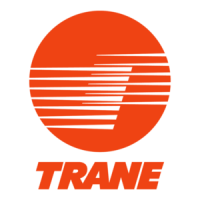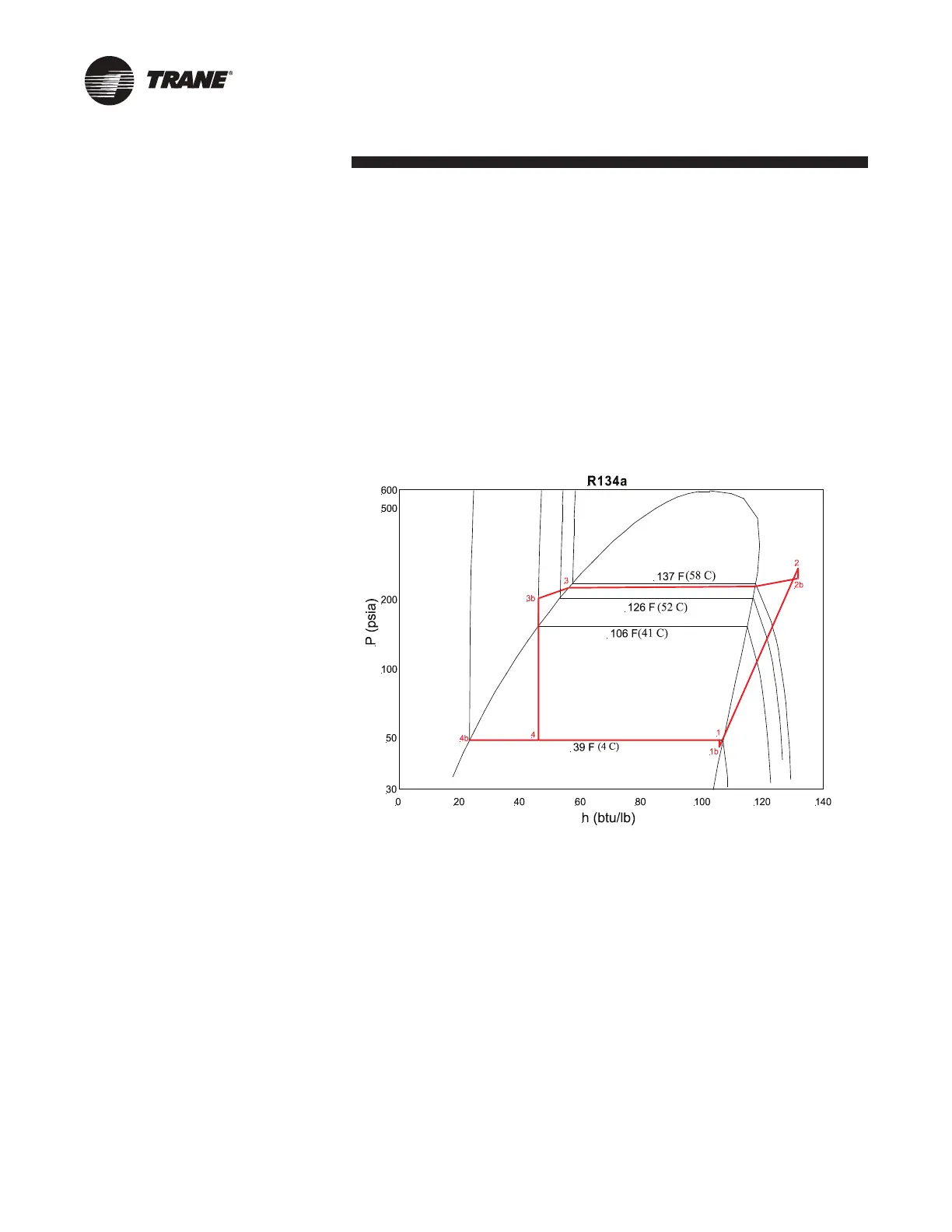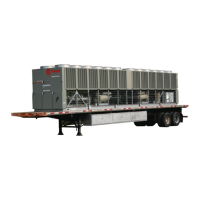56 RTAC-SVX002A-EN
This section contains an overview
of the operation and maintenance
of RTAC units equipped with CH530
control systems. It describes the overall
operating principles of the RTAC design.
Refrigeration Cycle
The refrigeration cycle of the RTAC
chiller is similar to that of the RTAA air
cooled water chiller. The exception is
that the evaporating and condensing
temperatures have been increased to
allow for optimization of the chiller and
reduced foot print. The refrigeration
cycle is represented in the pressure
enthalpy diagram in Figure 33. Key state
points are indicated on the gure. The
cycle for the full load ARI design point is
represented in the plot.
Fig. V-01 – Pressure Enthalpy (P-h) diagram of RTAC chillercircuito
The RTAC chiller uses a shell and
tube evaporator design with refrigerant
evaporating on the shell side and water
owing inside tubes having enhanced
surfaces (states 4 to 1). The suction
lines and bolt pads are designed to
minimize pressure drop.(states 1 to 1b).
The compressor is a twin-rotor helical
rotary compressor designed similarly to
the compressors offered in other Trane
Screw Compressor Based Chillers
(states 1b to 2).
The discharge lines include a highly
efcient oil separation system that
virtually removes all oil from the
refrigerant stream going to the heat
exchangers (states 2 to 2b). De-
superheating, condensing and
sub-cooling is accomplished in a n
and tube air cooled heat exchanger
where refrigerant is condensed in the
tube (states 2b to 3b). Refrigerant ow
through the system is balanced by an
electronic expansion valve (states 3b to
4).
Operating Principles

